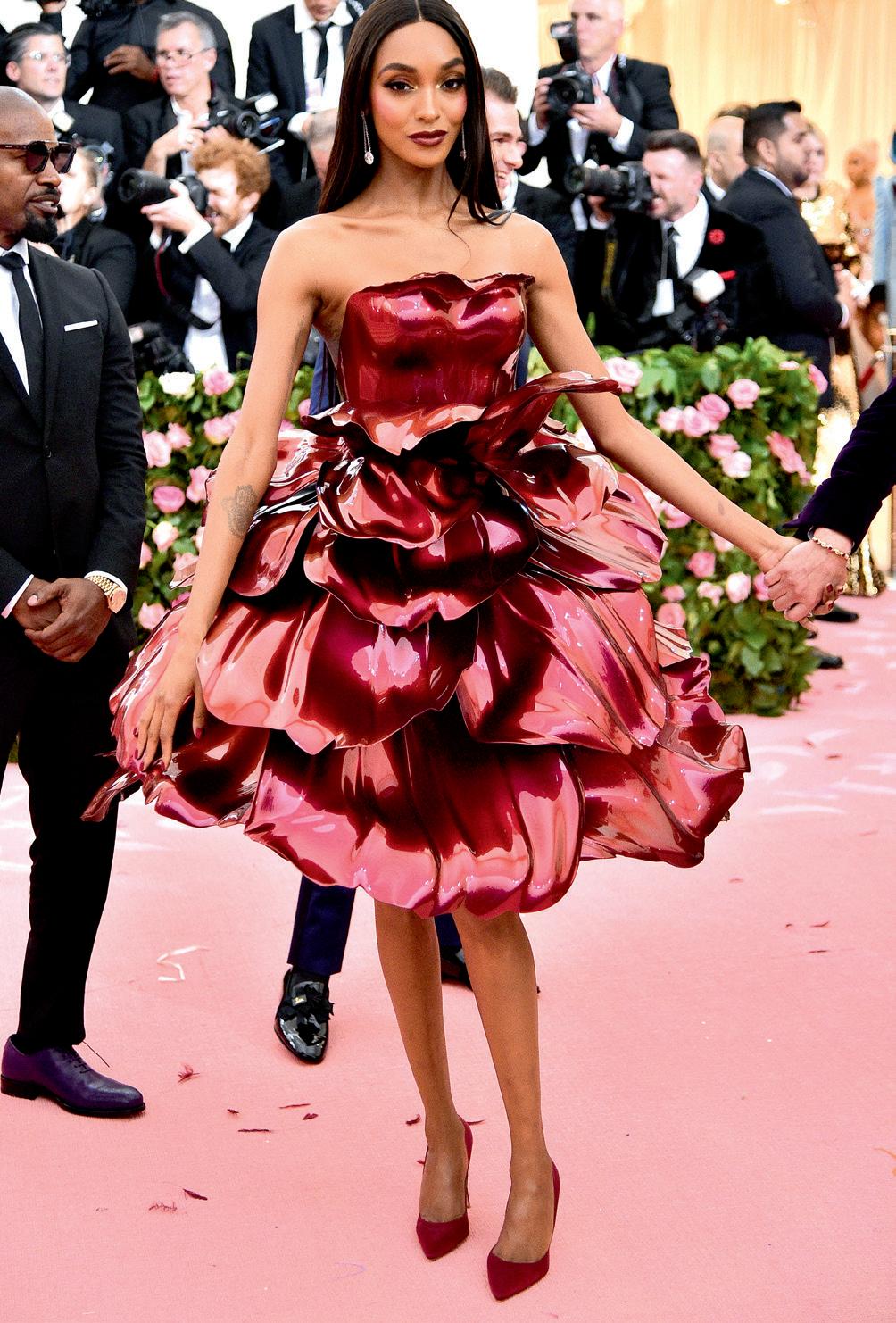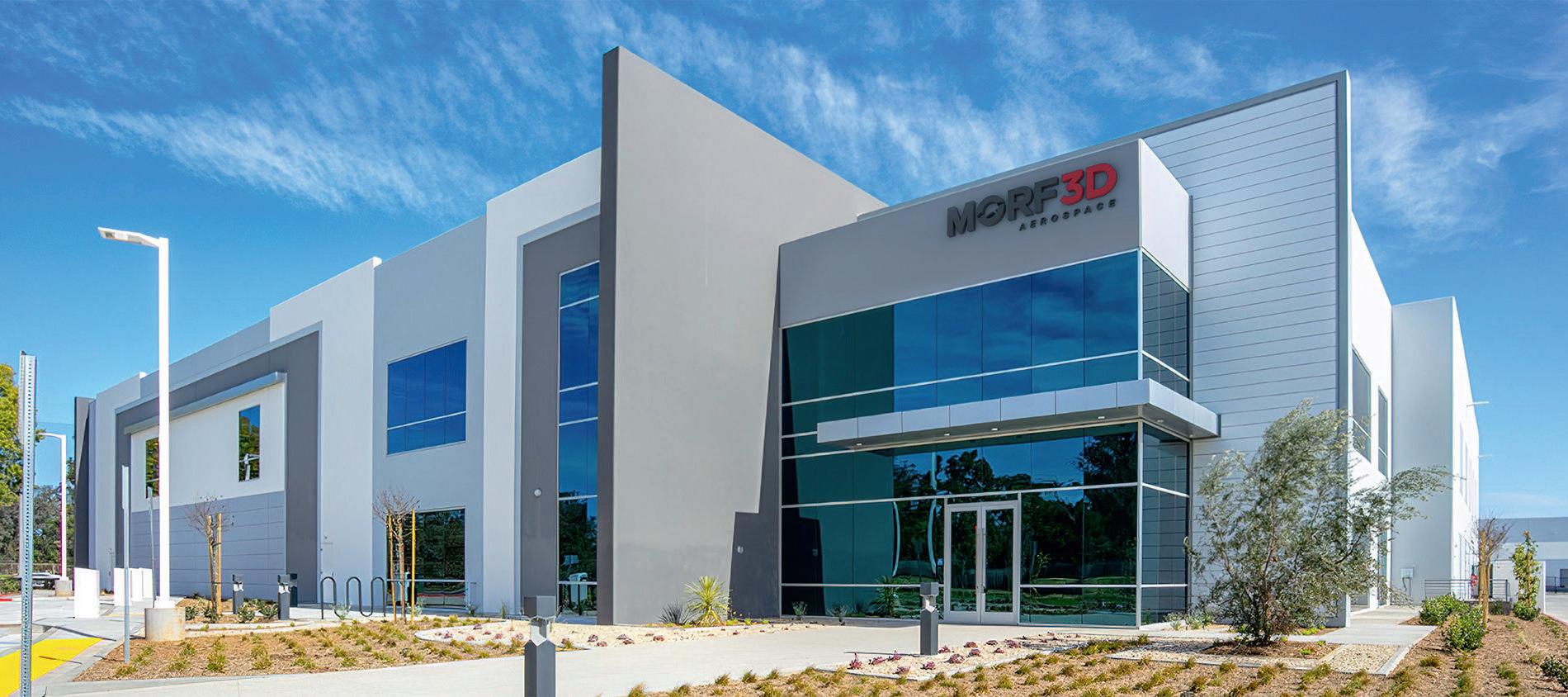Innovators on Innovators
STEPHANIE DEPALMA X ERIC UTLEY
Engineers from GE Additive and Protolabs reflect on their collaboration with Zac Posen, which saw 3D printing used for the creation of Meta Gala gowns.
I
n 2019, fashion designer Zac Posen teamed up with GE Additive and Protolabs to harness 3D printing technology in the development of several garments that would be worn by Jourdan Dunn, Nina Dobrev, Katie Holmes, Julia Garner and Deepika Padukone at that year’s Met Gala. Earlier this year, we brought together GE Additive Operations Leader Stephanie DePalma [SDP] and Protolabs Applications Engineer Eric Utley [EU] to recount the 1,500 manufacturing hours it took to develop the fashion pieces. SDP: So, before the Met Gala project, I was involved in the engineering consulting business branded AddWorks within GE Additive. And that was really the whole premise of how we started this collaboration with Zac of teaching customers about the technology of 3D printing, about engineering design and how to take a vision that you have in your head and create it into 3D digital space and then make it a physical reality with the machine. That was really what I was doing before. Since the Met Gala, one of the things that we found that's been tremendously helpful was the entire story that we went through with Zac of taking somebody who knew the premise of the technology but wasn't obviously super technical, and then how we communicated what the technology was capable of doing, the design journey that we went on of taking those things that were in Zac's head and making them a reality and then being able to show the physical end result of what we had at the Met Gala. And what that's done for us is it
gives us not only that whole design story, but to also talk about the manufacturing process of how during that project, you were so great Eric, of printing all these coupons in different finishes, because that was important to Zac to see and touch and feel, what was in his head and how it could possibly be in real life. And just the whole value of the manufacturing process and then the options that you have to change your design, from what is in a 3D CAD model to what would actually come out of the printer and after post-processing. What kind of takeaways has Protolabs had or been able to use this engagement in relating to their process or their customers? EU: Yeah, so it was a different sort of project for us. And really, I learned a lot about juggling three parties, you had us and GE and Zac Posen, and then us really finding a path forward on that project that all of us could fulfil, and like you said, learning from that project, maintaining the timeline was a struggle for that. And good planning really paid off on that project. And leveraging risk mitigation, as well, and it was fun, because I felt like I was on the opposite side of the fence for once. Usually, I'm the one servicing the product developers and the people trying to push these products out. And now I'm in that seat, feeling that pressure, feeling that heat of 'oh my god, we got to get this in the next week or two, or the project sank or our timelines going to get pushed, we're gonna have to make sacrifices somewhere else.' And so, rapid prototyping for risk mitigation. So it's like, we want option A, B, C, or D. And
let's just print A through Z, and see what comes out on the other side. That was fun. You mentioned the petals. I remember, I was working with Sarah from GE, and Zac and we were like, how thick do we want these pedals to be? Because you go too thick, and it's too heavy, and it's clunky, and you go too thin, and it's too delicate, and it's just going to break. And we ran prototypes to test it and I remember our first pieces were about eight inch thick, like right at 0.125 inches, and we felt it and we said, alright we can go a little lighter than this and we shaved it down. We looked at the math, basically, if you send those petals out by the width of a sheet of paper, it was going to take a pound off the whole dress. So even just shaving that tiny little extra bit would make a significant difference in how comfortable and how well the model can move in it. And I felt like we dialled that in really close to the edge in the end. And it was just funny, we're doing the same thing aerospace engineers are doing on a rocket but doing it on a dress. SDP: I don't know Eric, if we ever shared with you, during the process, as we were going through that light weighting and iteration of how the petals would fit. So, Sarah and Shannon, who both worked on the project from GE, they tried to put the gowns on themselves to a certain extent, and we would put we put the petals around us and think, how does this feel? How could we move in this? And then we'd come back, and they would make some adjustments to the model and send it to you and say, well, we tried to take
VOL 8 ISSUE 3 / www.tctmagazine.com / 073












